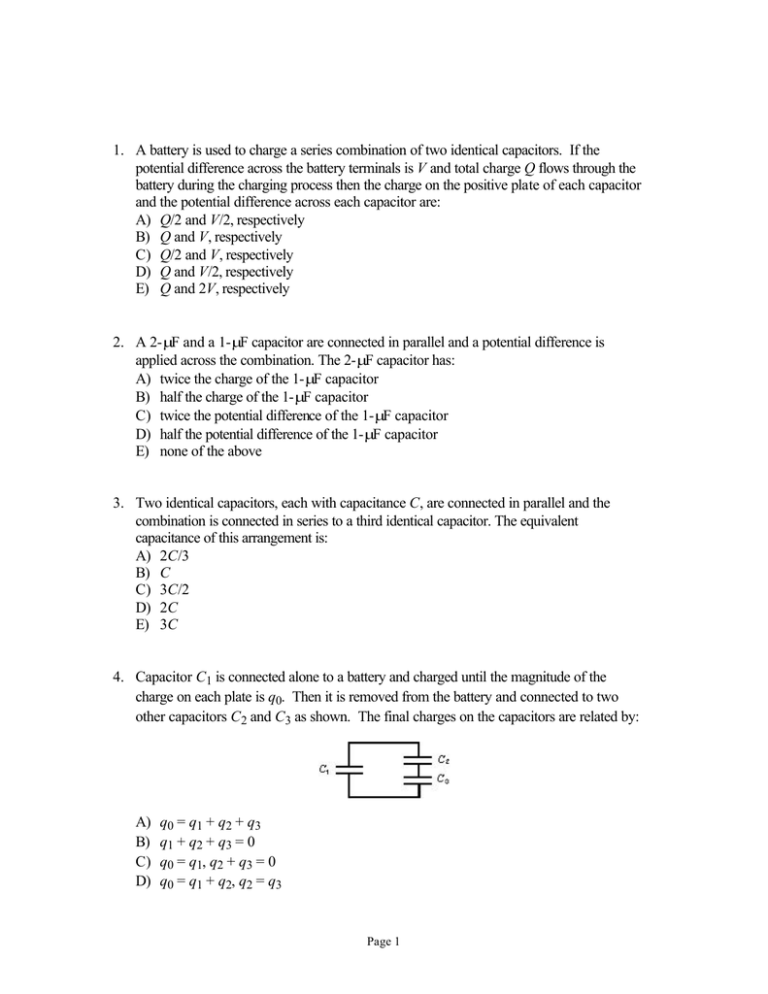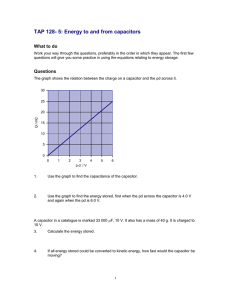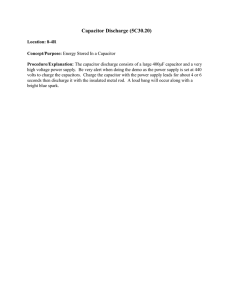1. A battery is used to charge a series combination of two identical
advertisement

1. A battery is used to charge a series combination of two identical capacitors. If the potential difference across the battery terminals is V and total charge Q flows through the battery during the charging process then the charge on the positive plate of each capacitor and the potential difference across each capacitor are: A) Q/2 and V/2, respectively B) Q and V, respectively C) Q/2 and V, respectively D) Q and V/2, respectively E) Q and 2V, respectively 2. A 2-µF and a 1-µF capacitor are connected in parallel and a potential difference is applied across the combination. The 2-µF capacitor has: A) twice the charge of the 1-µF capacitor B) half the charge of the 1-µF capacitor C) twice the potential difference of the 1-µF capacitor D) half the potential difference of the 1-µF capacitor E) none of the above 3. Two identical capacitors, each with capacitance C, are connected in parallel and the combination is connected in series to a third identical capacitor. The equivalent capacitance of this arrangement is: A) 2C/3 B) C C) 3C/2 D) 2C E) 3C 4. Capacitor C1 is connected alone to a battery and charged until the magnitude of the charge on each plate is q0. Then it is removed from the battery and connected to two other capacitors C2 and C3 as shown. The final charges on the capacitors are related by: A) B) C) D) q0 = q1 + q2 + q3 q1 + q2 + q3 = 0 q0 = q1, q2 + q3 = 0 q0 = q1 + q2, q2 = q3 Page 1 E) q0 = q2 + q3, q1 = 0 5. A parallel-plate capacitor has a plate area of 0.2 m2 and a plate separation of 0.1 mm. If the charge on each plate has a magnitude of 4 × 10–6 C the electric field between the plates is approximately: A) 0 B) 4 × 102 V/m C) 1 × 106 V/m D) 2 × 106 V/m E) 4 × 1012 V/m Answer Key: 1. 2. 3. 4. 5. D A A D D Page 2


